
Metal Roof Colors in Florida 2025: Trends, Energy Efficiency, and Style
Choose the perfect color for your metal roof in Florida: 2025 trends, energy savings, and how to boost your home’s value. Get a quote today!
If you’ve noticed unsightly black streaks on your Miami roof, you’re certainly not alone. This pervasive issue plagues countless homes across South Florida, diminishing curb appeal and often causing homeowners to mistakenly believe their roof is severely damaged or needs premature replacement.
These dark discolorations are not simply dirt or grime; they are primarily caused by a resilient strain of blue-green algae known as Gloeocapsa magma. Miami’s unique climate – characterized by high humidity, frequent tropical storms, and the constant presence of salt air – creates an ideal breeding ground for this aggressive organism.
While the aesthetic impact is immediate and noticeable, roof algae can also pose potential hidden risks, including moisture retention beneath the algal colonies, which can contribute to granule loss and, in severe cases, accelerate the deterioration of roofing materials.
Understanding the science behind this common nuisance and implementing effective prevention and treatment strategies is essential for preserving the longevity and appearance of your Miami roof.
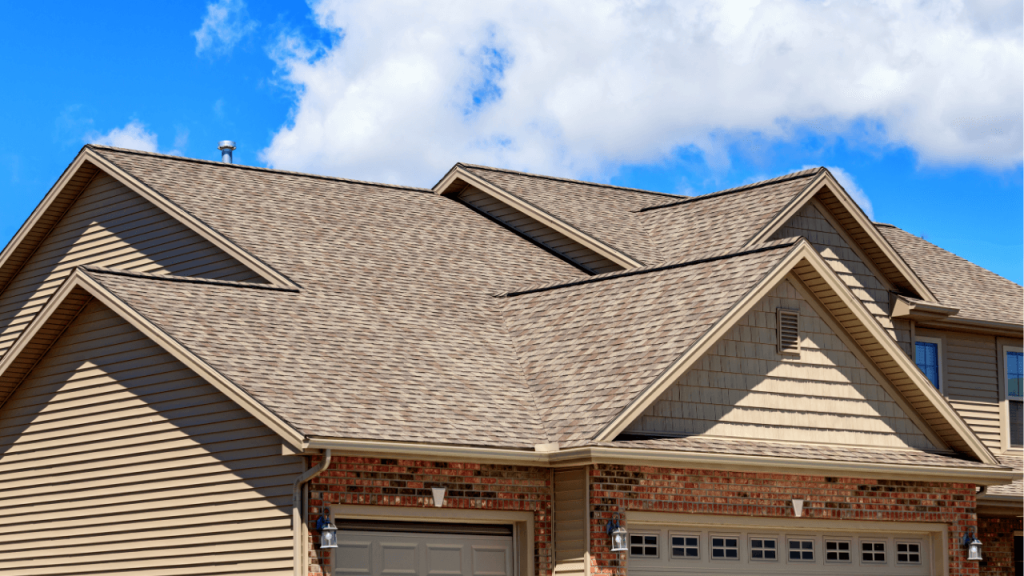
In this article, we’ll see:
The Miami Algae Problem Defined: What those dark streaks on your roof really are (Gloeocapsa magma), why Miami’s unique climate is a perfect breeding ground, and the hidden risks beyond just curb appeal.
Miami: The Algae Hotspot: Why the city’s high humidity (often over 70% year-round), warm temperatures, frequent rains, and even salt air create an ideal environment for rapid algae growth, affecting over 85% of Miami-Dade County roofs within five years.
DIY Cleaning: Risks vs. Rewards: A critical look at why attempting to clean your roof yourself with bleach solutions, despite seeming simple, poses significant dangers like falls, shingle damage from pressure washing, and harm to landscaping, often leading to short-term results.
Algae-Resistant Shingles: Miami’s Ultimate Shield: How copper-lined granules in specialized shingles like Owens Corning’s (with 25-year algae warranties) continuously release copper ions to prevent up to 95% of algae growth, offering a long-term, cost-effective solution compared to standard shingles.
When Repair or Replacement is Essential: Key warning signs indicating more than just surface algae, such as significant granule loss, extensive moss growth, soft spots on the roof deck, or interior leaks, and how they signal a need for professional intervention.
Understanding Your Investment: A cost breakdown for professional algae cleaning ($400–$800), partial shingle replacement ($1,000–$4,000), and a full AR shingle roof ($15,000–$28,000), helping you determine the appropriate solution for your roof’s condition.
Why Choose Roofing Nation in Miami: How Roofing Nation’s decade-plus of local expertise, free inspections (algae and storm damage), specialized AR shingle installations (with 0% financing), and assistance with insurance claims make them the go-to partner for Miami homeowners.
Get a no-obligation quote today
Simply fill out the form below and take the first step toward expert service.
Miami’s tropical climate provides the perfect environmental cocktail for Gloeocapsa magma to flourish. This particular cyanobacterium thrives in warm, humid conditions, feeding on the limestone fillers commonly found in asphalt shingles. The constant moisture and heat create an ideal microbial breeding ground, leading to the rapid spread of the characteristic black streaks.
Research confirms that Gloeocapsa magma is highly prevalent in the southeastern United States, often referred to as the «algae danger zone.» Miami’s average relative humidity often exceeds 70% year-round, as per NOAA data for Miami International Airport, providing the consistent moisture levels this algae craves.
The warm temperatures, which rarely dip below freezing, ensure that the algae can grow actively throughout the year, unlike in colder climates where it may become dormant. This continuous growth cycle means that if left untreated, the streaks can spread quickly and become more ingrained in the shingle surface.
Beyond the baseline humidity and heat, Miami’s specific environmental factors exacerbate the problem. The frequent torrential rains, while seemingly washing the roof, actually help to spread the airborne Gloeocapsa magma spores across the roof surface, particularly from higher elevations to lower ones.
The prevalence of tropical storms and hurricanes also plays a role; post-hurricane conditions, such as those seen in Kendall after Hurricane Irma, often lead to accelerated algae blooms due to widespread moisture and debris. Moreover, the omnipresent salt air in coastal Miami contributes to the issue.
Airborne salt particles carried by coastal winds can settle on roof surfaces, potentially providing trace nutrients for algae, and more importantly, acting as a transport mechanism for algae spores from one property to another, allowing the infestation to spread throughout neighborhoods. This combination of factors explains why over 85% of roofs in Miami-Dade County develop noticeable black streaks within five years of installation, highlighting the aggressive nature of Gloeocapsa magma in this environment.
For Miami homeowners confronting unsightly black streaks, the allure of a DIY cleaning solution can be strong, often driven by a desire for cost savings. The most common DIY method involves a diluted bleach and water solution.
Typically, a 1:1 ratio of household bleach to water is recommended, applied with a garden sprayer. After application, the solution is allowed to sit for 15-20 minutes, then rinsed thoroughly with a garden hose. The bleach acts as a potent algaecide, killing the Gloeocapsa magma on contact.
However, despite its apparent simplicity, attempting DIY roof cleaning comes with significant risks and potential drawbacks that often outweigh the perceived rewards:
For 90% of Miami homeowners, the risks associated with DIY roof cleaning far outweigh the potential savings. Professional cleaning from certified experts like Roofing Nation is not only safer but also provides more effective and longer-lasting results. Professional roof cleaning services utilize specialized low-pressure washing techniques («soft washing») and environmentally safe, biodegradable cleaning solutions that effectively kill algae without damaging shingles or landscaping.
They also possess the necessary safety equipment and expertise to navigate roofs securely, minimizing risk to both property and person.
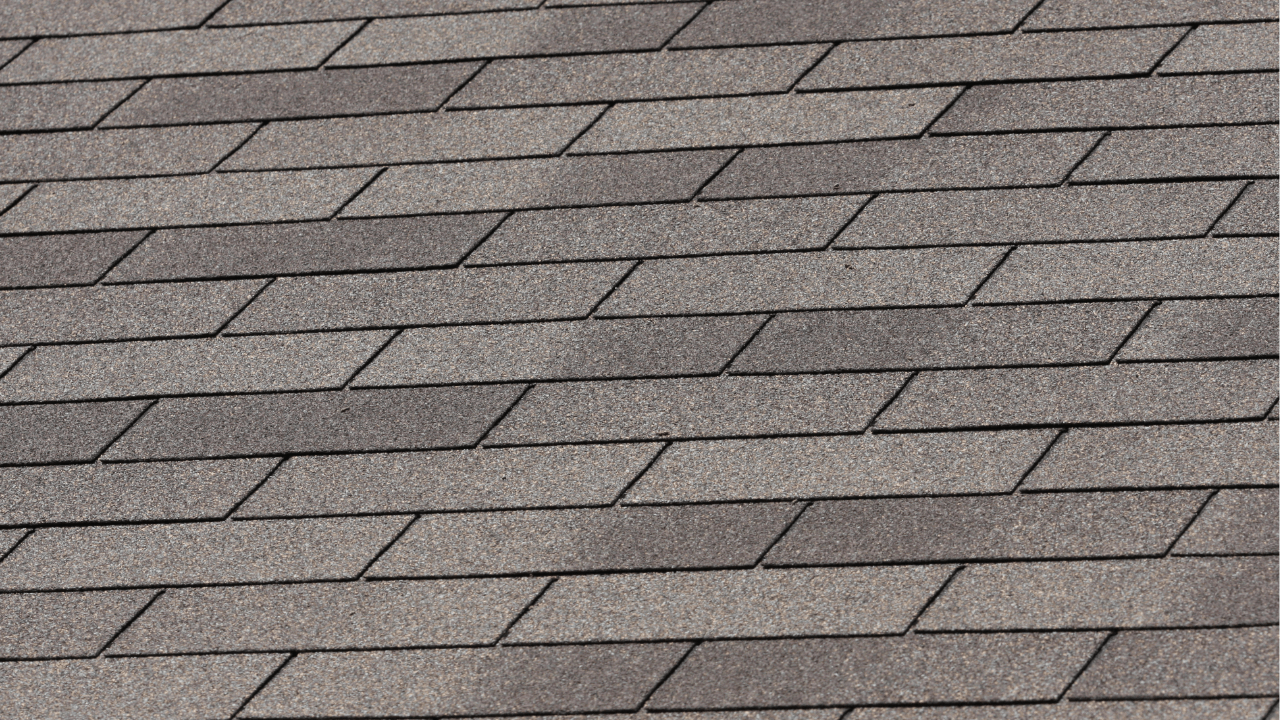
For Miami homeowners seeking a long-term, proactive solution to the persistent problem of Gloeocapsa magma, algae-resistant (AR) shingles represent the ultimate shield. These specialized shingles are engineered to actively inhibit algae growth, providing a virtually maintenance-free roof surface that maintains its aesthetic appeal for decades.
How AR Shingles Work: The key to the effectiveness of AR shingles lies in their innovative design, specifically the incorporation of copper-lined granules. Leading manufacturers like Owens Corning utilize proprietary technologies such as their StreakGuard Algae Resistance Protection. This system integrates copper-infused granules directly into the shingle’s surface during the manufacturing process.
When rain falls on the roof, it washes over these copper-lined granules, causing microscopic amounts of copper ions to be released. These copper ions are toxic to Gloeocapsa magma and other types of algae, preventing their germination and growth on the shingle surface.
This continuous, low-level release of copper acts as a highly effective, built-in algaecide, keeping the roof free of unsightly black streaks.
Comparison: AR Shingles vs. Standard Shingles in Coastal Zones: In coastal environments like Miami, the difference in performance between AR shingles and standard shingles is particularly stark. Standard shingles, with their limestone fillers and porous surfaces, provide an ideal breeding ground for algae spores, especially when combined with high humidity and warmth. They quickly succumb to discoloration. AR shingles, conversely, are specifically designed to counteract these conditions.
The copper inhibition effectively neutralizes the primary environmental factors that promote algae growth on the shingle surface. Research, including independent studies cited by the Insurance Information Institute (III), indicates that copper granules in quality AR shingles can prevent up to 95% of streaks caused by Gloeocapsa magma, even in highly humid, algae-prone regions.
Warranty & Longevity: A significant advantage of investing in AR shingles is the robust warranty coverage provided by manufacturers. Premium AR shingle lines, such as Owens Corning’s Oakridge and Duration series, often come with 25-year warranties against algae discoloration, in addition to their limited lifetime material warranties. This provides homeowners with long-term peace of mind, knowing that their investment is protected against this pervasive problem.
The extended warranty period reflects the manufacturer’s confidence in the enduring efficacy of their copper granule technology.
Cost-Benefit: While AR shingles typically carry a slightly higher upfront cost compared to standard asphalt shingles (often a 10-20% premium), the long-term cost-benefit is substantial.20 For Miami homeowners, this premium is quickly recouped by eliminating the need for frequent professional algae cleanings.
With AR shingles, you can expect to go 10+ years without requiring specialized cleaning expenses for algae streaks, a significant saving compared to the recommended 2-3 year cleaning cycle for non-AR roofs. Moreover, a clean, streak-free roof maintains curb appeal, which can positively impact property value and marketability in a competitive real estate environment.
As Owens Corning-certified installers, Roofing Nation is uniquely positioned to provide Miami residents with the highest quality AR shingle installations. We understand the critical importance of these materials in our local climate. To make this essential upgrade accessible, Roofing Nation offers 0% financing for qualified Miami residents, ensuring that superior protection and lasting beauty are within reach for your home.
While addressing algae is crucial for maintaining your roof’s appearance, it’s equally important to distinguish between mere surface growth and signs of underlying damage that necessitate repairs or even a full roof replacement. Ignoring these critical indicators can lead to more extensive and costly issues.
Red flags indicating deeper problems:
Cost Table: Understanding the Investment
The solution depends on the severity of the problem. Here’s a general guide to Miami average costs for common roofing services:
Service | Miami Average Cost |
Professional algae cleaning | $400–$800 |
Partial shingle replacement | $1,000–$4,000 |
Full AR shingle roof | $15,000–$28,000 |
Professional algae cleaning is suitable for aesthetic issues on an otherwise healthy roof. However, if any of the «red flags» above are present, a more substantial intervention is required. Partial shingle replacement can address localized damage, but if deterioration is widespread, a full replacement with algae-resistant shingles is often the most cost-effective and protective long-term solution. A professional assessment from Roofing Nation can accurately diagnose the extent of the damage and recommend the most appropriate and cost-effective course of action, ensuring your investment is well-placed.
For Miami homeowners, confronting roof algae and the broader challenges of maintaining a robust roofing system requires a partner with deep local expertise and an unwavering commitment to quality. Roofing Nation is that partner.
Serving Miami since 2010, we possess an unparalleled understanding of the unique demands placed on roofs in this climate. We don’t just see salt air as a general concept; we understand its corrosive impact on fasteners and flashing, and how it contributes to the rapid spread of airborne algae spores.
Our decade-plus of experience means we’ve witnessed countless algae blooms, including those that proliferated rapidly post-Hurricane Irma in neighborhoods like Kendall, and we’ve developed proven strategies to combat them effectively.
Our suite of services is specifically tailored to Miami’s needs. We offer free algae inspections, allowing our certified experts to accurately assess the extent of algae growth and identify any underlying issues. Beyond algae, we also provide free storm damage assessments, which are crucial for uncovering hidden wind or impact damage that might have occurred during Miami’s frequent tropical storms. These comprehensive inspections ensure that whether your concern is aesthetic or structural, you receive a thorough and accurate diagnosis.
Roofing Nation specializes in algae-resistant (AR) shingle installations. As Owens Corning-certified installers, we provide Miami homeowners with access to industry-leading products like the Duration series with StreakGuard protection, backed by robust warranties. Our installation teams are meticulously trained to adhere to the latest Florida Building Codes, ensuring your new AR roof is not only beautiful but also engineered to withstand hurricane-force winds and relentless humidity.
Our unique value proposition extends to simplifying the often-complex process of dealing with insurance companies. We understand that while aesthetic algae damage is rarely covered by insurance, severe moisture retention or granule loss caused by prolonged algae or moss growth can lead to structural damage that is covered.
We handle insurance claims for algae-related damage by meticulously documenting any structural issues, water intrusion, or accelerated deterioration directly attributable to the algae, and working closely with your insurer to advocate for proper coverage. Choosing Roofing Nation means choosing a local expert dedicated to protecting your Miami home, both from the elements and from unnecessary financial burdens.
Why does Miami have more roof algae than other cities?
Miami’s climate is exceptionally conducive to Gloeocapsa magma growth. NOAA data confirms that Miami’s average relative humidity consistently exceeds 70% year-round, often rising above 85% during peak summer months.
This persistent high humidity, combined with abundant warmth and frequent rainfall, creates the ideal moist, nutrient-rich environment that this specific blue-green algae thrives in.
Can bleach damage my asphalt shingles?
Yes, bleach can damage your asphalt shingles if used improperly.
While a diluted solution (e.g., 1:1 bleach to water) is effective at killing algae, incorrect ratios or excessive application can erode the protective ceramic granules on the shingle surface.
This granular loss accelerates shingle deterioration and reduces its lifespan. For safe and effective cleaning, always hire professionals like Roofing Nation who use proper techniques and appropriate solutions.
Do algae-resistant shingles work in coastal Miami?
Absolutely. Algae-resistant (AR) shingles are specifically designed for humid, algae-prone regions like coastal Miami. They incorporate copper-lined granules that release microscopic amounts of copper ions when wet, inhibiting Gloeocapsa magma growth.
Studies, including those referenced by the Insurance Information Institute (III), indicate that the copper in Owens Corning shingles, for example, can prevent up to 95% of streaks, effectively keeping roofs clean in challenging coastal environments.
How often should Miami roofs be cleaned?
For standard asphalt shingle roofs in Miami, professional cleaning is typically recommended every 2–3 years to prevent severe algae buildup.
However, for homes equipped with algae-resistant (AR) shingles, this frequency can be significantly extended, often requiring cleaning only every 5–7 years, or even longer, due to the continuous algae-inhibiting properties of the copper granules.
Are dark streaks covered by insurance?
Typically, homeowners insurance policies do not cover aesthetic damage like dark algae streaks, as they are generally considered a maintenance issue rather than sudden, accidental damage.
However, if prolonged algae or moss growth has led to underlying structural damage, such as moisture retention causing wood rot or excessive granular loss compromising the shingle’s integrity, aspects of that damage might be covered. Roofing Nation can assist in documenting such structural issues to support potential claims.
What’s the lifespan of algae-resistant shingles in Miami?
High-quality algae-resistant shingles, such as those from Owens Corning’s Duration® and Oakridge® series, are designed to last 25+ years in Miami’s climate with proper maintenance. Many manufacturers offer 25-year limited warranties specifically against algae discoloration, reflecting their durability even in challenging coastal zones.
Regular maintenance, including trimming overhanging branches and ensuring proper drainage, can help maximize their lifespan.
Can algae cause roof leaks?
Indirectly, yes. While Gloeocapsa magma itself doesn’t directly cause leaks, dense patches of algae or moss can retain significant moisture against the roof surface. This constant dampness can accelerate granular loss, soften and eventually rot the underlying wood roof deck, and lift shingles, creating pathways for water intrusion and leading to roof leaks.
Scheduling biannual roof inspections is crucial to catch and address such issues before they escalate.
Why is Roofing Nation Miami’s top choice for algae issues?
Roofing Nation is Miami’s top choice for algae issues due to our extensive local expertise since 2010, specialized services like free algae inspections and professional AR shingle installations, and our ability to assist with insurance claims related to underlying algae-induced damage.
We are Owens Corning-certified installers, offer 0% finance options for Miami residents, and provide solutions precisely tailored to the coastal climate challenges, ensuring durable and aesthetically pleasing results.

Choose the perfect color for your metal roof in Florida: 2025 trends, energy savings, and how to boost your home’s value. Get a quote today!
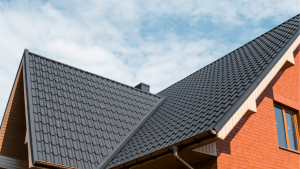
Discover how metal roofs resist hurricanes, slash energy bills, and boost your Florida home’s value. Get a FREE quote today!
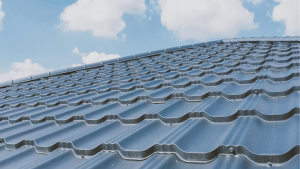
2025 updated comparison: costs, lifespan, and resistance of metal roofs in Florida. Get your installation quoted by local experts!
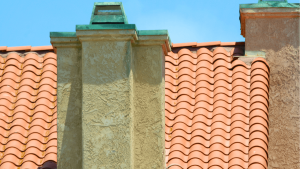
Discover if a terracotta roof is ideal for your Florida home: durability, 2025 costs, and hurricane resistance. Get FREE advice!

With our updated guide for 2025, you’ll discover not only how long tile roofs truly last in Miami’s challenging climate but also how to choose the right type and the keys to maintenance that will guarantee decades of protection.
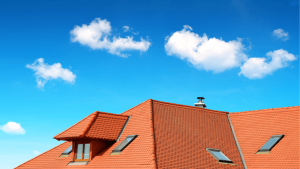
Don’t let such a significant investment turn into a nightmare. With our updated guide for 2025, you’ll discover not only how long tile roofs truly last in Miami’s challenging climate but also how to choose the right type and the keys to maintenance that will guarantee decades of protection.
® All rights reserved,
Roofing Nation LLC.
10830 NW 138th St #1, Hialeah
Gardens, FL 33018
(Monday – Sunday)
© Copyright Roofing Nation. All Rights Reserved 2025